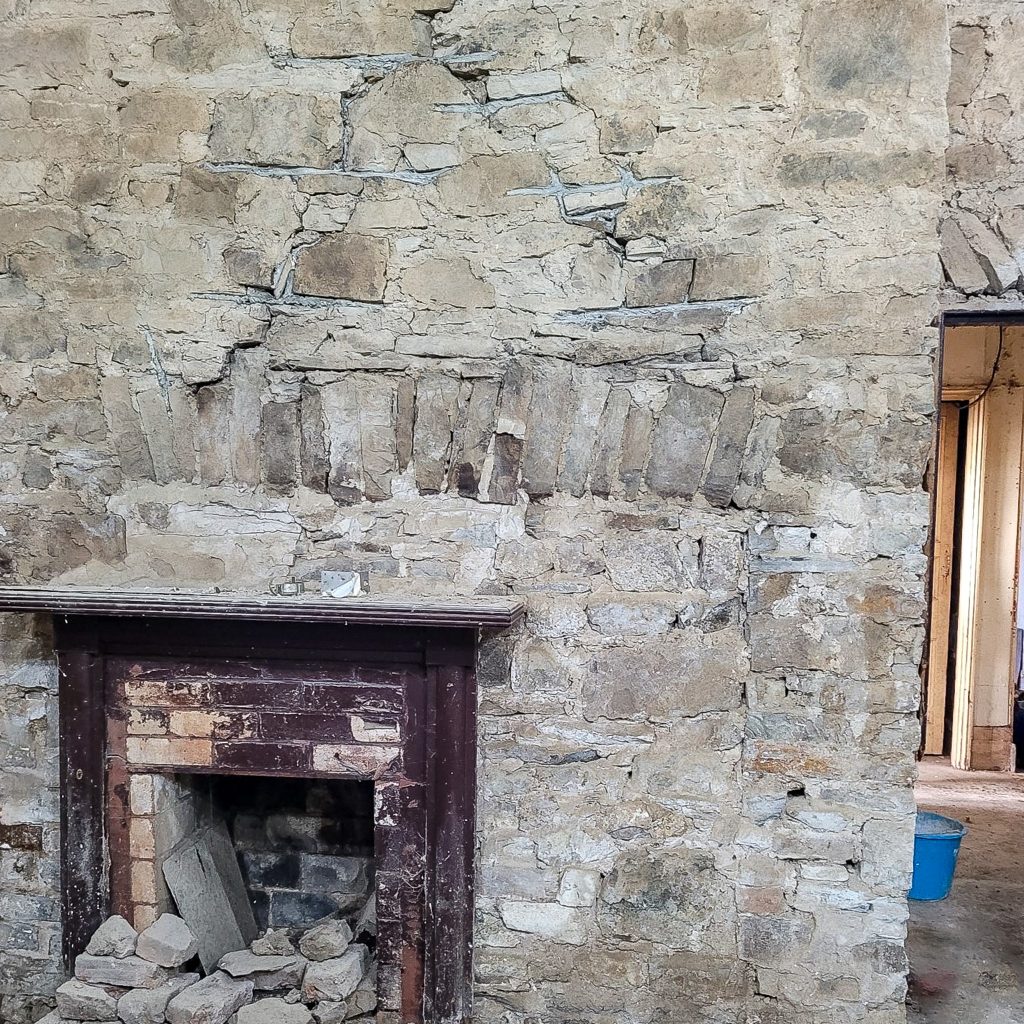Property of significant historical interest requiring sensitive restoration techniques
Hidden within the grounds of a busy holiday complex, the derelict country home was saved from demolition by a preservation order and was in dire need of structural repairs.
Phase 1
The villa was originally built in the 1820s and has remained relatively unaltered since the 1940s. The 19th century property is presently undergoing an extensive strip-out and repair to make good the structure before completing further remedial works.
Works took place within an operational holiday park, requiring effective containment and security, using Heras fencing and visual screening where necessary to clearly segregate the site from public access. Scheduled deliveries and a traffic management plan was put in place to minimise disruption and risk to safety.
Environmental surveys were paramount to preliminary/enabling activities, with the containment of exclusion zones within the upper floors and roof area for the protection of bat species. TCi worked closely with building engineers to stabilise the footings and make good to the ground floor as part of the first phase, prior to moving through the property to proceed with renovations.



The first phase saw the begining of the front porch restorations, consisting of a Lath and plaster celing.
Phase 2

In phase 2, the front porch restorations were completed and sympathetic restorations took place on the ground floor rooms, using heritage techniques and authentic materials, including lime plaster and locally sourced wooden flooring.
Original features have been restored, including bespoke architraves, coving and wood panelling.


All of the walls, floors and joists in the ground floor rooms underwent significant structural repairs to ensure the stability and safety of the property.
The fireplace in the reception room was fully restored with great detail and respect for the original style.




Phase 3
TCi continued restoring the ground floor of the house to complete the process of bringing the property back to functional operation.
The works included installing the windows and shutters in the living room, accompanied by the repair of the living room fireplace.



Phase 4
In this phase TCi repaired the 19th Century listed, dogleg, open-string staircase with a moulded handrail, curtail step and turned balusters.
The sympathetic restorations included the bespoke ornate architrave and carving on the spindles which are an excellent representation of the time period holding much significant historical interest.
The process involved bracing the walls floors and stairs in order to restore the staircase to its former glory while maintaining its integrity.





Phase 5
This phase of the works was focussed on restoring some of the exterior features of the property, increasing weather protection and improving moisture management. This included the installation of a French drain around the perimeter of the house and the removal of two very old, high-level galvanised steel water tanks. The stone pillars which held up the water tanks were restored with lime mortar and were capped off with a lime coping and repointing repairs.
The old iron gate and fencing at the front of the property have been replaced with a new larger 5 bar gate and fencing. This has increased the width of the entrance and enhanced the look of the incoming driveway.

Before:




After:




TCi is committed to ensuring that all aspects of the restoration are addressed comprehensively and effectively, working closely with the client and the relevant authorities to understand the scope of the next phase of works.




